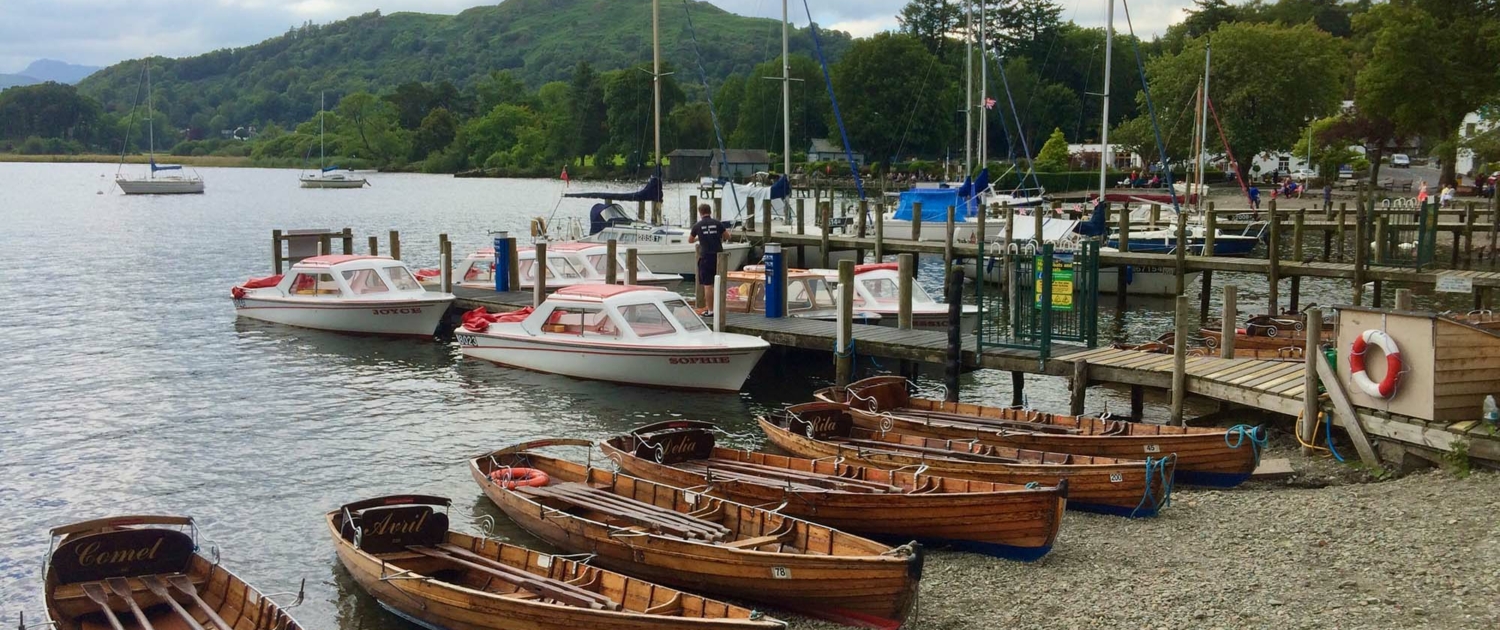Tourism in a glaciated upland area – The Lake District
Why do people visit the Lake District?
The Lake District in northwest England became a National Park in 1951. The Lake District is renowned for its mountains, hills (fells) and lakes. Glaciers carved the mountains during the last Ice Age, creating broad valleys and jagged peaks. Current surveys show that 15.8 million visitors come to the Lake District annually. Most come to enjoy the scenery, peace and walking, but many others visit specific attractions or participate in outdoor activities.
The physical attractions of the Lake District include:
- Lakes such as Windermere and Ullswater offer opportunities for water sports such as canoeing and paddle boarding, cruises, and fishing.
- Adventure activities such as rock climbing, abseiling and gorge scrambling.
- Hiking and mountain biking.
The cultural/historical attractions of the Lake District include:
- The home of Beatrix Potter, Hill Top, is close to Lake Windermere and is popular with tourists.
- Scenic towns and villages such as Grasmere and Ambleside are popular with tourists.
- Monuments such as Muncaster Castle at Ravenglass.
- The landscape inspired writers and poets like William Wordsworth.
What are the impacts of tourism in the Lake District?
Tourism in the Lake District has a range of social, economic and environmental impacts.
Social Impacts of Tourism in the Lake District
- Current data suggest 15.8 million people visit the Lake District each year. Consider the impact of this on the 40,000 local people.
- 83% of visitors to the Lake District travel by car. Over half of these people use their car as the primary form of transport within the park. This causes severe congestion on the narrow, winding roads.
- House prices are high in the Lake District, with 20% of the properties either second homes or holiday rentals.
- Jobs in tourism are typically seasonal and poorly paid.
Economic Impacts of Tourism in the Lake District
- Tourist revenue in the Lake District was £3 billion in 2019, supporting hotels, shops and restaurants.
- Fifteen thousand local people are employed in tourism in the Lake District, working in shops, restaurants, hotels and other businesses.
- New businesses, such as adventure tourism, create new jobs for local people.
- Congestion slows business communications in the Lake District.
Environmental Impacts of Tourism in the Lake District
- The main honeypot sites and footpaths experience considerable erosion, litter, and damage to verges by cars.
- Ecosystems are affected by pollution from cars and boats.
- Farmland is affected by walkers leaving litter, trampling crops and disturbing sheep and cattle.
- Lakeshore erosion is a continuing problem around Windermere. Tourists and locals enjoy walking by the lakeshore, but it destroys plant life and leads to erosion of the area. Soil gets washed away, and then only a stony beach remains rather than a natural area of reeds and water-loving plants.
How is tourism in the Lake District being managed?
Managing Traffic Congestion
The Department of Transport funds the Go Lakes Travel Programme through a £6.9m initiative. It aims to change how visitors travel to and around the Lake District, focusing on more sustainable travel methods, including:
- Reducing congestion by Improving public transport services and traffic management.
- Developing integrated cycling and walking networks with wheelchair access.
- Creating transport hubs, like the one at Ambleside, and using integrated ticketing allows people to use different modes of transport.
- Expanding park and ride schemes, such as the Honister Rambler, connecting town car parks with popular footpaths and villages.
- Developing dual carriageways to improve access.
Managing Footpath Erosion
Fix the Fells is a partnership programme between the Lake District National Park, National Trust, Natural England, Lake District Foundation, Friends of the Lake District and Cumbria County Council to repair erosion scars which have developed over the years and to make sure that these scars are prevented in the future.
The Lake District fells are enjoyed by millions of walkers every year, but the high-level paths can be surprisingly fragile, and the sheer number of visitors leaves a mark on the landscape. Over time the grass is compacted by heavy foot traffic and dies. Heavy rainfall quickly washed away the exposed soil down the steep slopes into streams, rivers and eventually, the lakes, where the increased silt causes havoc for fish and other species.
The work aims to prevent this loss of grass and soil by designing and creating paths resilient to wear and tear and reducing the impact on the surrounding landscape. On steep slopes, you may see ‘pitching’ where stone has been laid, while on less steep slopes, the paths may have been repaired by a ‘soil inversion’ technique with a digger.
Related Topics
Use the images below to explore related GeoTopics.


